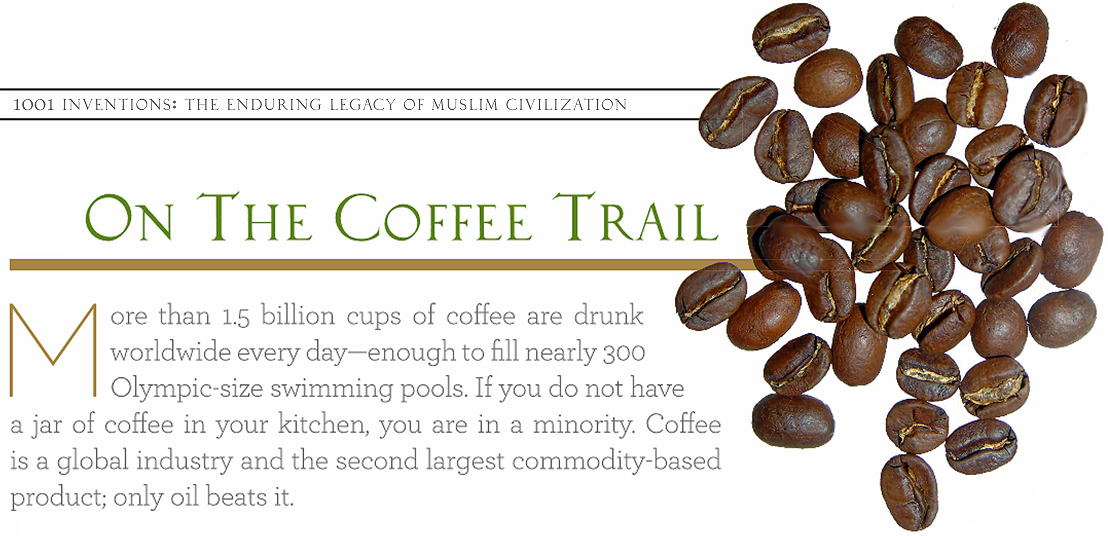
Constantine the African and the Qayrawani doctors: Contribution of the ‘Phoenicians’ of North Africa to Latin Medicine in the Middle Ages and Renaissance
by Charles Burnett
Coffee is a global industry and the second-largest commodity-based product; only oil beats it. More than 1,200 years ago, as the story goes, a herd of goats and their watchful master, a shepherd, discovered this simple, life-changing substance. As his goats grazed, he noticed they became lively and excited after eating a particular berry. Instead of just eating the berries, people boiled them to create al-qahwa.

***
Note of the Editor: The Foundation for Science, Technology and Civilisation (FSTC) in partnership with 1001 Inventions published a new edition of the “1001 Inventions: The Enduring Legacy of Muslim Civilization” book. This article is an extract from Chapter 2 of this book.
***

Sufis in Yemen drank al-qahwa for the same reasons we do today, to stay awake. Coffee was spread to the rest of the Muslim world by travellers, pilgrims, and traders, reaching Mecca and Turkey in the late 15th century and Cairo in the 16th century.
The consumption of coffee in Europe was based largely on the traditional Muslim preparation of the drink. This entailed boiling the mixture of coffee powder, sugar, and water together, which left a coffee residue in the cup because it was not filtered. However, in 1683, a new way of preparing and drinking coffee was discovered, and it became a coffeehouse favourite.
Cappuccino coffee was inspired by Marco d’Aviano, a priest from the Capuchin monastic order, who was fighting against the Turks besieging Vienna in 1683. Following the retreat of the Turks, the Viennese made coffee from abandoned sacks of Turkish coffee. Finding it too strong for their taste, they mixed it with cream and honey. This made the colour of coffee turn brown, resembling the colour of the Capuchins’ robes. Thus, the Viennese named it cappuccino in honor of Marco D’Aviano’s order. Since then, cappuccino has become popular for its enjoyable, smooth taste…
It was an Ottoman merchant named Pasqua Rosee [Paşa Rıza] who first brought coffee to England in 1650, selling it in a coffeehouse in George-yard, Lombard Street, London. Eight years later, another coffeehouse called Sultaness Head was opened in Cornhill. Lloyd’s of London, today a famous insurance company, was originally a coffee shop called Edward Lloyd’s Coffee House. By 1700, there were about 500 coffeehouses in London, and nearly 3,000 in the whole of England. They were known as “penny universities” because you could listen and talk with the great minds of the day for the price of a coffee.

An illustration depicts Edward Lloyd’s Coffee House, established in the 17th century.
“Coffee is the common man’s gold, and like gold,
it brings to every person the feeling of luxury and nobility.”
*Sheikh ’Abd-al-Kadir, who wrote the earliest known Manuscript on the history of coffee in 1588
2 / 5. Votes 8
No votes so far! Be the first to rate this post.


Muslim Heritage:
Send us your e-mail address to be informed about our work.
This Website MuslimHeritage.com is owned by FSTC Ltd and managed by the Foundation for Science, Technology and Civilisation, UK (FSTCUK), a British charity number 1158509.
© Copyright FSTC Ltd 2002-2020. All Rights Reserved.